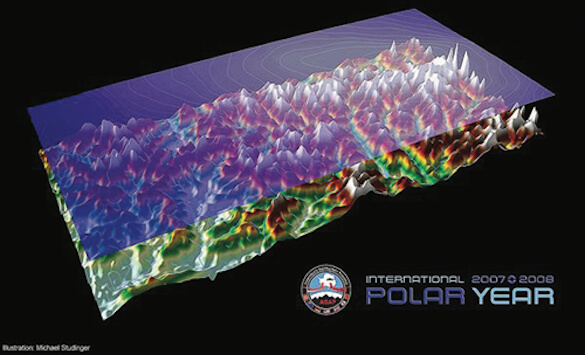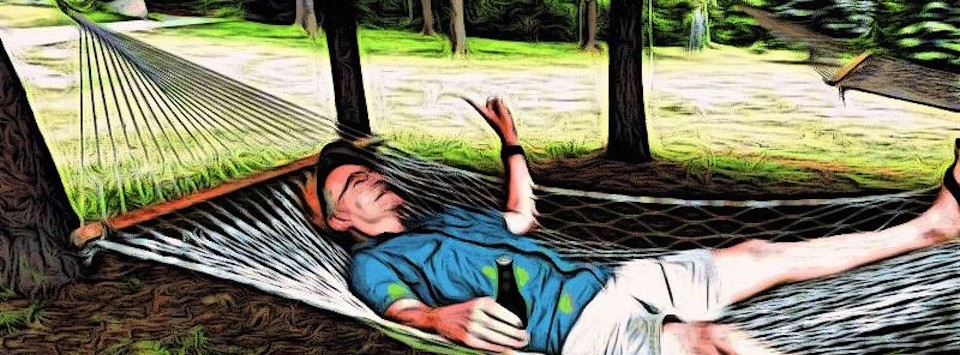Archive: Whipple Shielding
Preventing Satellite Debris

My good friend Jeff Mann, the true Yard Ramp Guy, has asked me to revisit some of my original posts. This week in my From the Archives series: it's either space junk...or me, trying to make a pizza.

Space Junk
In 2013, director Alfonso Cuarón came out with Gravity, a movie about junk. Specifically, it's a movie about space junk.
In the film, a missile strike on a satellite results in a runaway chain reaction of collisions between space junk and satellites. This brings down space stations, satellites, and spacecraft left and right, rendering Earth's orbit useless to manned travel.
Gravity is an excellent movie, and we’ll forgive a few scientific inaccuracies, since they're all in service of the plot. (Neil Degrasse Tyson, despite his multiple criticisms of the science, is a fan of the film.)
The threat in Gravity is a very real one. It's a scenario known as Kessler Syndrome, where space debris collides with space debris, generating more space debris, which collides with yet more space debris, until that specific orbit around Earth is so filled with debris that it is rendered nearly useless for human purposes. (Low Earth orbit is the most likely orbit to be lost to this process, though geosynchronous orbit is another possible victim.)

Being Geosynchronous
It's not astonishing that this is a serious concern for NASA and other space scientists. There are more than 2,000 satellites in orbit, about 1,500 of which are operational, along with nearly 18,000 trackable artificial objects.
Smaller objects are even more common—at least 29,000 chunks of debris in orbit that are more than 10cm in size, nearly 700,000 between 1-10cm in size, and 170 million chunks of debris below 1 cm in size.
Even with how spacious Earth's orbit is, there's a very high chance of impact, and at least one satellite is destroyed by debris every year. Space junk is a serious threat even if it doesn't trigger Kessler Syndrome.
Steps are being taken to combat the risk. We're tracking debris much more carefully than ever right now. The International Space Station and other spacecraft have special protective layers known as Whipple shield: instead of building hulls out of thicker material, engineers add an extra thin layer some distance over the regular hull. The layer isn't meant to stop the debris but to break it into smaller chunks. In essence, Whipple shield turns debris from a bullet into birdshot. It even makes the needed thickness for the inner hull much smaller, so overall spacecraft mass is actually reduced.
And this: we’re developing a technology known as a laser broom. Targeting a laser on debris will heat up one side of the debris. The resulting heat emissions will then alter and destabilize the debris' orbit, causing it to burn up in the atmosphere.
Like me, trying to make pizza.
Yard Ramp Guy Blog: New & Noteworthy
The (real) Yard Ramp Guy has a grab-bag blog entry this week that involves a sales promotion, testimonials, turnkey services, and a way to get a better tax situation. I just love it when disparate tangents weave together.
Read all about it HERE.

Archive: East Meets West
Or: Is This Progress?

My good friend Jeff Mann, the true Yard Ramp Guy, has asked me to revisit some of my original posts. This week in my From the Archives series: All about logistics, architecture, and construction.

Days of Future Past
I meant to be already retired by now, but HR tells me they’re still looking and can I stay a bit longer, and otherwise they’ll sue me. So, I stay. (I think Maggie is bribing HR.)
The closer I get to that possible retirement, the more books I find myself reading. I’ve always been a reader, though I seem to have more time for it now. If you've followed my blog, you can probably guess I tend toward history, with an emphasis on logistics, architecture, and construction.
My most recent read is Daniel Brook's A History of Future Cities. Despite the name, it's not science fiction. Instead, it's a history of four cities (St. Petersburg, Mumbai, Dubai, and Shanghai) that have undergone rapid Westernization and industrialization by their rulers in an effort to turn them into world class cities.
These “instant cities” all have histories that eerily echo one another. They all seem to have gone through remarkably similar life cycles:
They began as nothing, or as a provincial backwater, then were built up massively in a very short time by order of their rulers.
They undergo a period of absurd Westernization, to the point of hiring exclusively Western architects, who often never even go to the cities before designing their buildings.
They all undergo a period of rejection and resentment by the rest of the nation.
These cities are most strongly characterized, however, by their rejection of the traditional ways of their country.
Each city is, of course, still extremely distinct from one another. Dubai, for instance, has a population that's 97% foreign workers, divided between affluent foreign businessmen and poor itinerant laborers shipped in from other countries and paid a pittance.
Mumbai is surrounded by and interwoven with one of the world's largest slums.
Shanghai disguises all of its poor workers it imports in uniforms and houses them in dorms on the outskirts of town.
Brook does an excellent job exploring the rise and fall of cities in regions trying to rapidly adapt to and join the technological West. The result is that these cities become not just comparable power players but places actually trying to be the West, in a very real sense.
Though A History of Future Cities definitely tends towards the somber at times, it's a surprisingly gripping read.
Archive: Cold Welding
Or: One Advantage of Being Messy

My good friend Jeff Mann, the true Yard Ramp Guy, has asked me to revisit some of my original posts. This week in my From the Archives series: This does NOT seem like a job for WD-40.

Shut the door, please
On June 3, 1965, a door failed to close.
In most situations, this would be a minor annoyance, but this was in the middle of the Gemini 4 space mission, and the door in question was the outer airlock door of the capsule—while they were in space.
So, yes: this was rather a big problem. In the end, the problem turned out merely to be a jammed spring; they managed to get the door shut. There were serious concerns, however, that a more severe problem might have occurred: cold welding.
Cold welding is exactly what it sounds like: Two pieces of metal welding together in cold conditions, rather than through application of heat. Specifically, it involves two clean, flat pieces of metal bonding together when they contact in a vacuum.
These need to be two exceptionally clean pieces of metal, since any contaminants can interfere with the process. Once they're welded, however, as far as the two pieces of metal are concerned, they're just one piece, not two. The process actually bonds the two together as if they'd always been one piece.
Needless to say, this is a big concern in space, where you really can't afford to have random mechanical failures due to pieces deciding they don't want to move.
Quite a few satellites have been lost through cold welding over the years, and the Galileo probe sent to Jupiter had its high-power antenna welded shut in this way.
There are a few good methods to help prevent cold welding these days—using plastic, ceramics, and coatings whenever possible, as well as making sure that any metals in or near contact with one another are different metals, to reduce risks of cold welding.
Finally, we have one more thing protecting us: our natural messiness. Skin oil, dust, and other contaminants can help prevent cold welding. And, guess what? We're really good at getting all that stuff on everything, even our super-expensive, high-tech space probes. Three cheers for being messy.
Archive: Discursive on the Gamburtsev
To Climb These Mountains, You Need to Dive

My good friend Jeff Mann, the true Yard Ramp Guy, has asked me to revisit some of my original posts. This week in my From the Archives series: Ocean mountains? Oh, my.

The Gamburtsev Discursive
There's a mountain range on Earth that no human has ever seen.
The Gamburtsev Mountain Range is about the size of the European Alps and are as rugged as the Rocky Mountains. Why has no one ever seen the mountain range? Because it's buried underneath 10,800 feet of ice in Antarctica.
Oh, and water flows uphill there.
One of the more interesting aspects of the Gamburtsevs is the ruggedness to them. They're more than a hundred million years old. By now they should have eroded enough to resemble the Appalachians, instead of looking like the Rockies.
Scientists today think the mountain range has actually been preserved by the ice above it—a counter-intuitive result, since absolutely nothing erodes mountains faster than glacial ice in normal circumstances.
The Antarctic ice sheets are so thick, however, that the ice starts to behave in a bizarre manner. As the pressure grows stronger farther and farther down into the ice sheet, the freezing point of water starts to drop lower and lower, until liquid water eventually exists at the bottom; the freezing point of water down there is simply just too low. The pressure actually forces the water to flow uphill!
We've identified other mountain ranges that were presumably buried underneath ice sheets during the Ice Age, including the Torngat Mountains in Canada and the Scandinavian Mountains.
If the ice in Antarctica ever melts, one effect will be that the mountains (currently with an average height of 8,850 feet) would rebound upwards. Ice sheets are so heavy that they actually press the continental crust downward into the mantle.
Removing the Antarctic ice sheets would cause the Gamburtsevs to rebound back up to 10,800 feet in height.
Thankfully, we're not likely to see them any time soon. Even the worst models for global warming don't predict that rebounding scenario as extremely likely. Which is a good thing because it would raise the sea level some 200 feet.
Yard Ramp Guy Blog: Yard Ramp Exit Strategy
This week, my friend The Yard Ramp Guy talks exit strategy.
Click HERE to go full circle with him.






